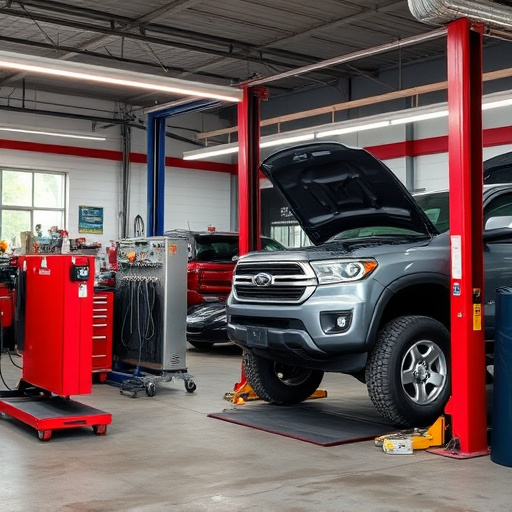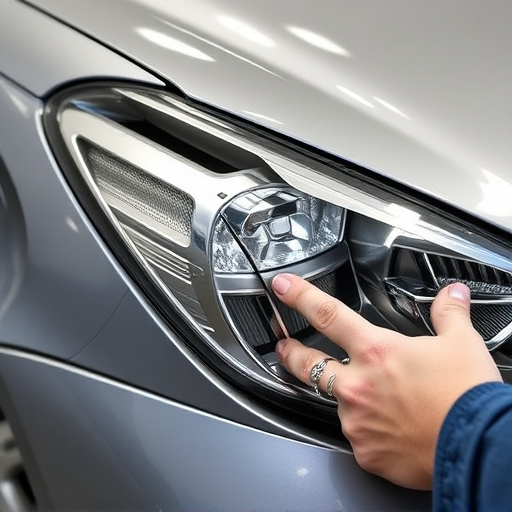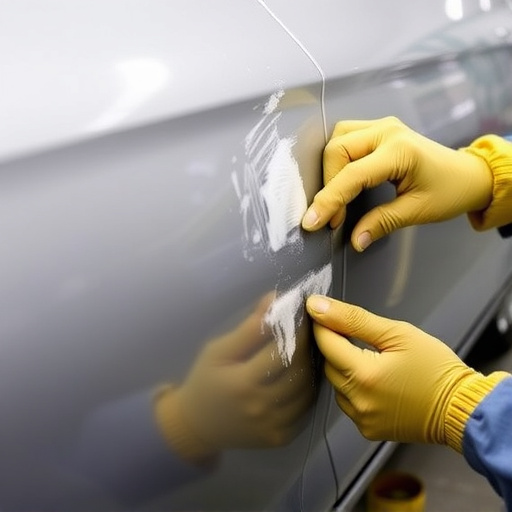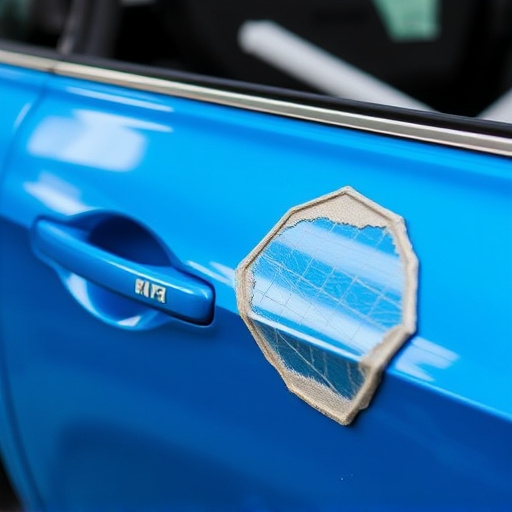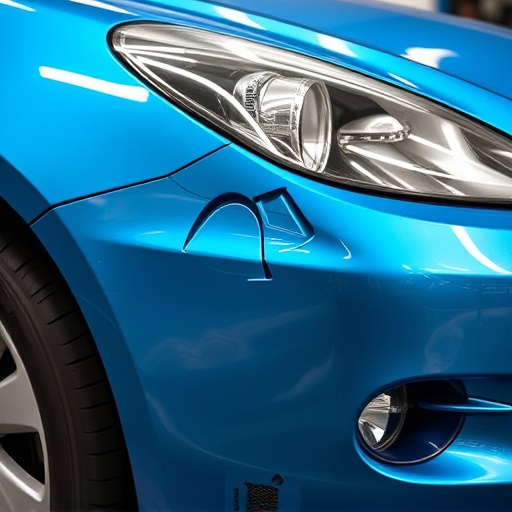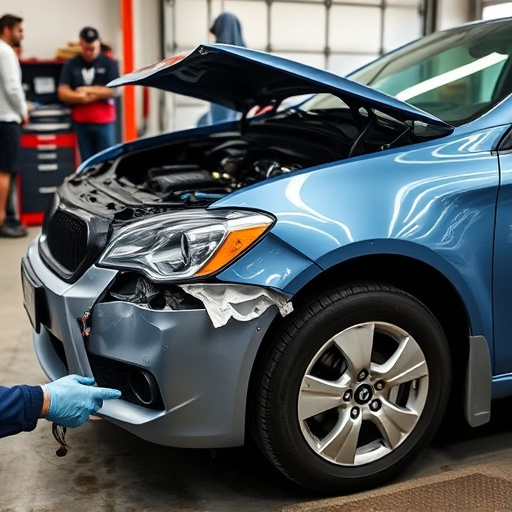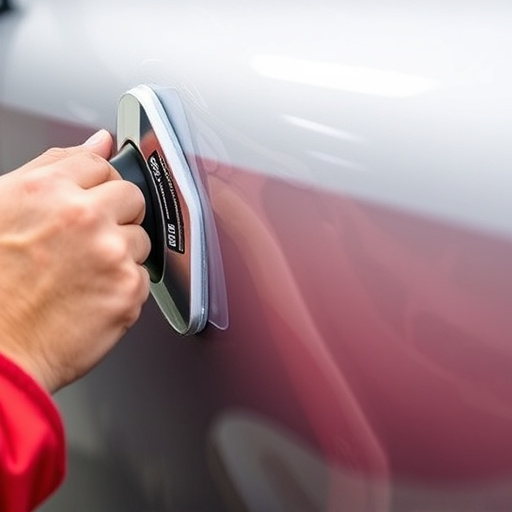A Tesla heat pump inspection involves a detailed assessment of your vehicle's thermal management system using specialized tools and software to ensure optimal performance in all climates. This process checks critical components like heat exchangers, refrigerant systems, compressors, control modules, and sensors for leaks, wear, or contamination. Regular inspections enhance energy efficiency, maintain vehicle comfort, and support Tesla's commitment to environmental sustainability. Any significant issues found should be addressed by fleet repair services or a collision center for seamless operation of advanced heat pump technology.
“Tesla’s innovative Heat Pump technology promises superior thermal management, but ensuring its optimal operation requires a meticulous inspection process. This article guides you through the intricacies of understanding and conducting a comprehensive Tesla Heat Pump Inspection. From identifying key components to interpreting results, gain insights into validating efficient thermal performance. Discover how these steps ensure your Tesla remains a powerful, energy-efficient system, enhancing both comfort and sustainability.”
- Understanding Tesla Heat Pump Inspection Process
- Key Components to Assess During the Inspection
- Interpreting Results: Ensuring Efficient Thermal Management
Understanding Tesla Heat Pump Inspection Process
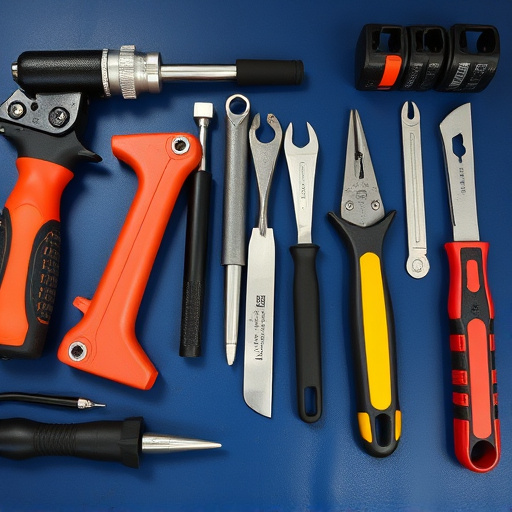
Understanding Tesla Heat Pump Inspection Process
Tesla heat pump inspection is a meticulous process designed to validate the efficient thermal management operation of your vehicle. It involves a series of steps, beginning with a comprehensive evaluation of the heat pump system, including its components such as the compressor, condenser, and evaporator coils. This initial assessment is crucial for identifying any potential issues or anomalies that could impact the system’s performance.
Auto body services experts utilize specialized tools and diagnostic software to monitor the heat pump’s functionality under various conditions. By simulating real-world scenarios, they ensure the system operates optimally both in cold and hot environments. This meticulous process not only enhances vehicle comfort but also plays a vital role in energy efficiency and environmental sustainability, aligning with Tesla’s commitment to cutting-edge automotive collision repair and vehicle restoration technologies.
Key Components to Assess During the Inspection
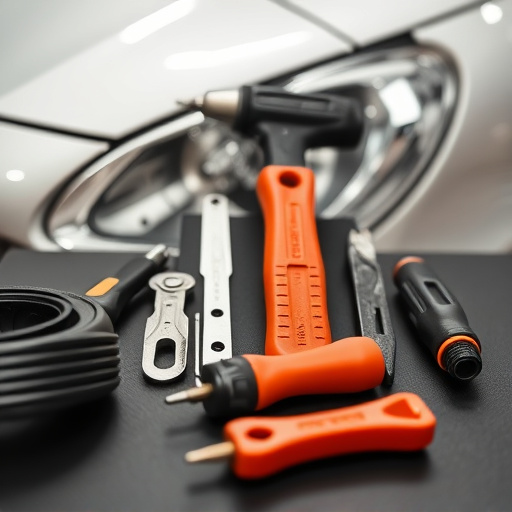
During a Tesla heat pump inspection, several key components require meticulous evaluation to ensure optimal thermal management operation. Among these are the heat exchangers, which facilitate the transfer of heat between the interior and exterior environments, playing a pivotal role in maintaining comfortable temperatures inside the vehicle. Inspectors should also assess the state of the refrigerant system, as any leaks or contaminants can significantly impact energy efficiency. The compressor, another critical element, must be checked for proper functionality and signs of wear, as it’s responsible for circulating the refrigerant throughout the system.
Additionally, the control module and sensors need to be thoroughly examined. These components are responsible for monitoring temperature levels and adjusting the heat pump’s operation accordingly. Ensuring they’re clean, in good working order, and accurately calibrate can significantly enhance overall performance. Moreover, considering the integration of fleet repair services or a well-equipped collision center for specialized auto body repairs may be beneficial if any major issues are identified during the inspection, emphasizing the importance of a comprehensive evaluation for seamless Tesla heat pump operation.
Interpreting Results: Ensuring Efficient Thermal Management

Interpreting the results of a Tesla heat pump inspection is crucial to ensuring efficient thermal management within the vehicle. This process involves meticulously evaluating the system’s performance, from the compressor and condenser to the evaporator and expansion valve. By analyzing pressure readings, temperature differentials, and refrigerant charge, technicians can identify any inefficiencies or anomalies that may impact the overall cooling capability of the heat pump.
During an inspection, it’s essential to compare the observed data with the system’s design specifications. This comparison helps pinpoint areas where adjustments might be needed, such as cleaning or replacing components. For luxury vehicle owners, regular Tesla heat pump inspections are not just about maintaining optimal performance; they also guarantee the longevity and reliability of their car repair services, ensuring that the vehicle remains a top-tier investment in terms of comfort and safety during operation.
A thorough Tesla heat pump inspection is a pivotal step in ensuring optimal thermal management within your vehicle. By meticulously assessing key components and understanding the inspection process, you can validate the system’s efficiency, confirm its proper operation, and ultimately extend the lifespan of your electric vehicle’s climate control system. Embrace these insights to navigate the inspection process with confidence and maintain a comfortable driving environment.
